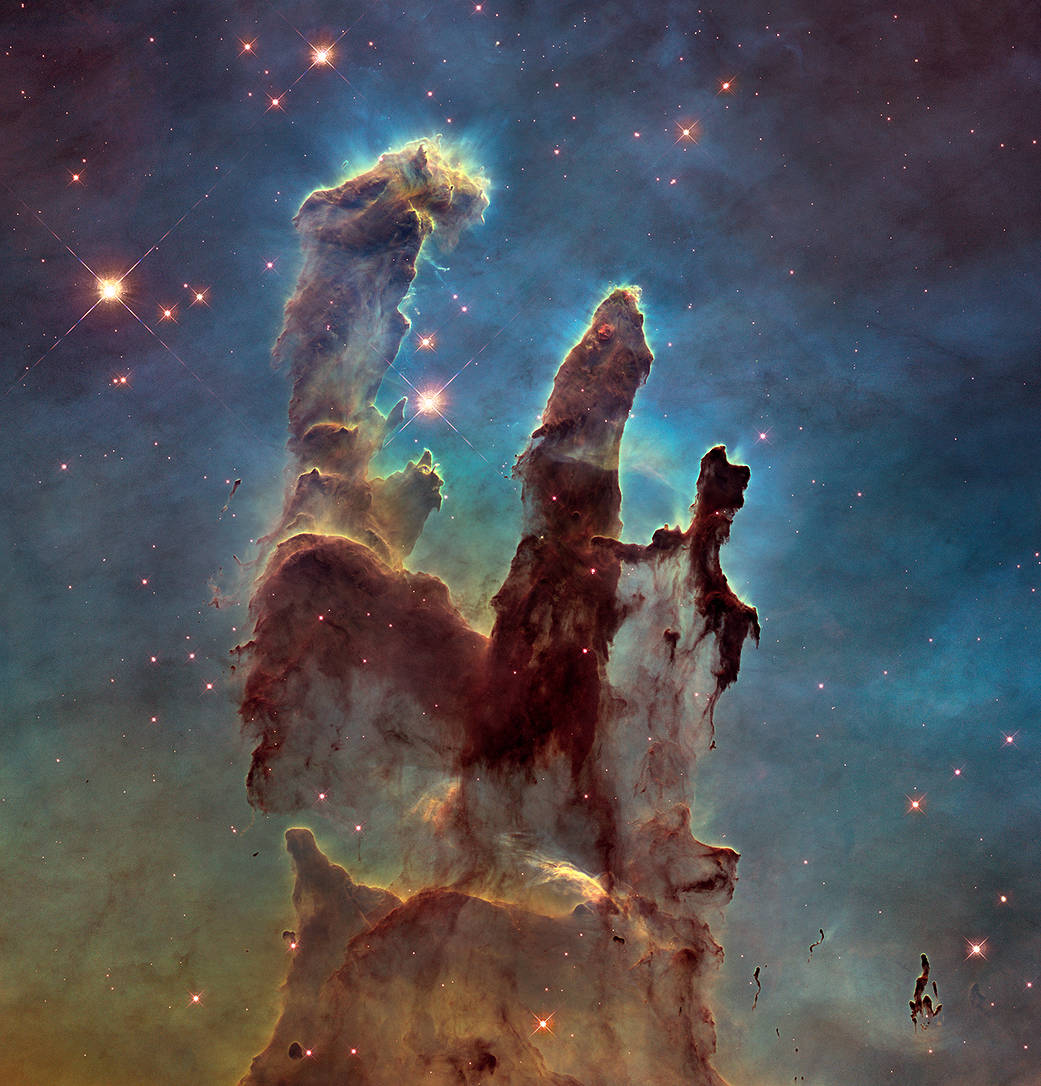The James Webb Space Telescope has captured a stunning view of the “Pillars of Creation” at the hearts of the Eagle Nebula some 6,500 light years from Earth. Famously imaged by Hubble Space Telescope in 1995 and again in 2014, the pillars as viewed by Webb’s infrared instruments reveal thousands of previously unseen stars and intricate details in the long towers of gas and dust that help define a vast stellar nursery.
The pillars are part of the Eagle Nebula, also known as M-16, in the plane of the Milky Way some 6,500 light years from Earth. It’s a target familiar to legions of amateur astronomers as an easy-to-find patch of nebulosity in the constellation Serpens near the border of Sagittarius.
Although this is not Hubble’s first image of this iconic feature of the Eagle Nebula, it is the most detailed. The blue colors in the image represent oxygen, red is sulfur, and green represents both nitrogen and hydrogen. The pillars are bathed in the scorching ultraviolet light from a cluster of young stars located just outside the frame. The winds from these stars are slowly eroding the towers of gas and dust.
Stretching roughly 4 to 5 light-years, the Pillars of Creation are a fascinating but relatively small feature of the entire Eagle Nebula, which spans 70 by 55 light-years. The nebula, discovered in 1745 by the Swiss astronomer Jean-Philippe Loys de Chéseaux, is located 7,000 light-years from Earth in the constellation Serpens. With an apparent magnitude of 6, the Eagle Nebula can be spotted through a small telescope and is best viewed during July. A large telescope and optimal viewing conditions are necessary to resolve the Pillars of Creation.
Credits: NASA, ESA and the Hubble Heritage Team (STScI/AURA)












